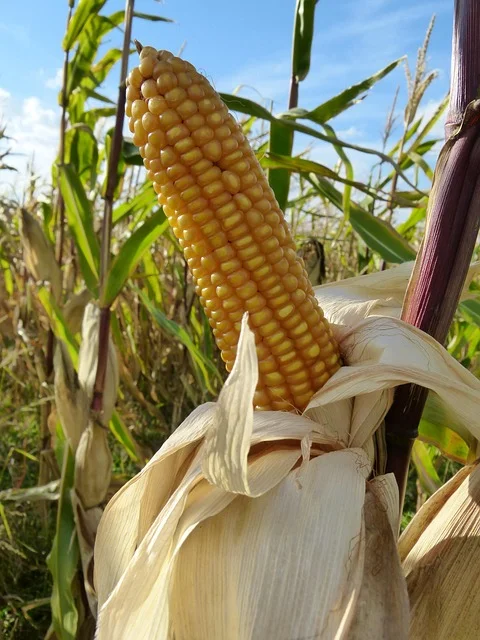The ROI of Getting Lost: An Analysis of the Corn Maze Economy
The operational parameters are straightforward. An agricultural enterprise named Cool Patch Pumpkins has allocated a significant portion of its land—40 acres, to be more exact, 16.2 hectares—to a temporary, complex routing problem. This installation is situated in Dixon, California, a strategic location along the Interstate 80 corridor, capturing traffic flow between the Sacramento and San Francisco metropolitan areas. The system, colloquially known as a corn maze, is designed with five elevated bridges for observational purposes and a stated minimum completion time of 45 minutes.
The primary objective of this system, according to its owner, Taylor Cooley, is to induce a state of managed disorientation. "When you’re in the corn, everything looks the same," Cooley states, articulating a deliberate goal to counteract the certainty provided by modern GPS technology. This is not an accidental byproduct; it is the core feature. The business model is predicated on selling a temporary, controlled failure of navigation.
The raw materials involved are notable. Beyond the corn stalks forming the maze walls, a secondary attraction—a "corn bath" for toddlers—contains 150,000 pounds (approximately 68,000 kilograms) of dried corn kernels. This is a substantial quantity of raw goods, repurposed from feedstock into a tactile entertainment medium. The entire operation is a seasonal venture, its lifecycle terminating on Halloween.
Initial anecdotal data from system participants, or "visitors," supports the efficacy of the design. One subject, Ryan Moore, projected a potential multi-day timeline for his completion, stating, "I have no sense of direction, and we could spend all day here... We have water. We’ll survive, three days." While hyperbolic, the statement points to a perceived difficulty level that significantly exceeds the 45-minute baseline. Another participant, Shelly Tang, indicated a strategic delegation of navigation to her children, suggesting a belief that their cognitive approach might be better suited to the problem set. This is an interesting, if unproven, hypothesis on heuristic problem-solving versus adult reliance on established patterns.
The Metrics of Getting Lost
Historical Performance and Market Position
This is not a new market entrant. Cool Patch Pumpkins has a documented history of operating at the upper end of its industry, having secured the Guinness World Record for the largest corn maze in both 2007 and 2014. These are significant data points, establishing the enterprise as a market leader with a track record of scaling its core product. The maze's design theme changes annually—this year's "celebrating farmers" follows previous iterations honoring veterans and first responders, indicating a marketing strategy that aligns the product with broadly positive social sentiment.

The competitive landscape includes other large-scale mazes in Quebec, Minnesota, and Illinois, suggesting a geographically dispersed but stable market for this form of entertainment. The Cool Patch Pumpkins installation, however, leverages its high-visibility location and record-holding pedigree as key differentiators.
And this is the part of the analysis that I find genuinely puzzling. I've analyzed business models built on hyper-optimization and frictionless user experiences for years. The objective is almost always to reduce the time and cognitive load required to get from point A to point B. Here, we have the inverse. The product's value is directly correlated to its inefficiency. The more time a user spends "failing" to solve the puzzle, the more "value" they are ostensibly extracting from their ticket price. It is a business built on the deliberate engineering of friction.
This leads to a necessary methodological critique of the available data. The "45-minute" completion time is a particularly soft number. Is this the mean, the median, or a marketing projection based on an ideal path? What is the standard deviation? More importantly, what is the DNF (Did Not Finish) rate? How many participants exit the maze through non-standard means (e.g., cutting through the corn husk walls or being escorted out by staff) before reaching the designated solution? Without this data, a true analysis of the system's difficulty and user experience is incomplete. The public statements are qualitative sentiment, not performance metrics. Details on how many people get truly, hopelessly lost remain scarce, but the potential is the entire point.
The sensory environment is part of the product. The rustle of dry leaves, the scent of damp earth and kettle corn from nearby stalls, the uniform visual field of green and yellow stalks—it all serves to degrade a person's innate directional senses. You are inside a dataset that looks the same in every direction, and your internal compass is the only tool you have. For a generation raised on blue dots and turn-by-turn directions, this is a novel, and apparently marketable, sensation.
A Calculated Loss
The Cool Patch Pumpkins corn maze is not an agricultural byproduct or a simple fall amusement. It is a precisely calibrated system for monetizing temporary cognitive dissonance. In an economy obsessed with data, efficiency, and optimization, this enterprise has successfully commercialized the complete absence of all three. It sells the experience of being an analog human in a digitally-perfected world. The return on investment for the customer isn't a destination, but the valuable, and increasingly rare, experience of being truly, harmlessly, lost.
Reference article source:
